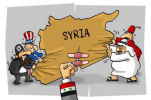 Most Australian and US viewers will be completely unaware that polls have consistently shown the majority of Syrians supporting their government and opposing armed opposition attacks. British journalist Jonathan Steele wrote in 2012, “Most Syrians back President Assad but you’d never know from Western media. In 2013, a NATO study concluded that Assad was winning the battle for Syrian hearts and minds. In light of this it seems fair to ask: Why are none of these voices included in a documentary about Syria? Why were there no voices from members of the Syrian American Forum or Arab Americans for Syria or from Syrians who actually live in Syria and experience the conflict first hand? Read whole article inside.
Most Australian and US viewers will be completely unaware that polls have consistently shown the majority of Syrians supporting their government and opposing armed opposition attacks. British journalist Jonathan Steele wrote in 2012, “Most Syrians back President Assad but you’d never know from Western media. In 2013, a NATO study concluded that Assad was winning the battle for Syrian hearts and minds. In light of this it seems fair to ask: Why are none of these voices included in a documentary about Syria? Why were there no voices from members of the Syrian American Forum or Arab Americans for Syria or from Syrians who actually live in Syria and experience the conflict first hand? Read whole article inside.
 This article originally entitled: PBS Frontline Fails the Public with “Obama at War”: A Case Study in Distortion and Bias on Syria, by Rick Sterling and first published on June 4th, 2015 at Dissident Voice.
This article originally entitled: PBS Frontline Fails the Public with “Obama at War”: A Case Study in Distortion and Bias on Syria, by Rick Sterling and first published on June 4th, 2015 at Dissident Voice.
Introduction
Frontline is an influential television program which examines important foreign and domestic issues. The shows tend to be technically well done – combining concise writing with compelling video. Many North Americans watch and have their beliefs shaped by Frontline documentaries.
Last week Public Broadcasting System channels across North America broadcast the Frontline special titled “Obama at War”. The 52 minute video portrays the following:
* Origins of the Syrian conflict
* Response of the Obama administration
* Evolution of the conflict
* The run-up and response to alleged chemical attacks in 2013
* Emergence of ISIS, Nusra and other extremist groups
* Where is the conflict headed? Where is US policy headed?
The video is online here. The approximate time stamp of some key moments in the video are noted in text below.
Positive Elements
On the positive side, the documentary acknowledges that:
* It is a violation of international law to provide weapons to a non-state actor trying to overthrow a sovereign state.
* The overthrow of the Libyan government led to chaos and increased sectarianism and violence.
* There might not be any easy solutions; escalating US involvement as demanded by the “Syrian opposition” and interventionists might actually make things worse.
In addition, the program shows the inner workings and debate process in the Obama administration.
That said, following are some key problems with the documentary.
Key Failings:
(1) Promotes “Syrian Opposition” that is more American than Syrian
Three “Syrian Opposition” members (Ouabi Shahbandar, Murhaf Jouejati, and Amr al Azm) appear 12 times through the documentary, using about 7% of the total time. In reality all of the three are U.S. Citizens; none of them has lived in Syria for many years or decades.
Ouabi Shahbandar is the “Syrian Opposition” member given prominent attention in the video. He came to the US at age 8. At Arizona State University in 2003 he was a young Republican neoconservative on the rampage, strongly supporting GW Bush and the invasion of Iraq, denouncing war protesters as “terrorists” and allying with far right figures such as David Horowitz. In the past decade he has worked for the US Dept of Defense.
Murhaf Jouejati teaches at the National Defense University (US Dept of Defense). A third voice is from Amr Al Azm who is leader of the US funded “Day After Project” intended to plan for development after regime change in Damascus. In short, all three “Syrian Opposition” voices are aligned and committed to US not Syrian national interests.
(2) Excludes authentic Syrian voices
Most viewers will be completely unaware that polls have consistently shown the majority of Syrians supporting their government and opposing armed opposition attacks. As the widely respected British journalist Jonathan Steele wrote in 2012, “Most Syrians back President Assad but you’d never know from Western media.” In 2013, a NATO study concluded that Assad was winning the battle for Syrian hearts and minds and “After two years of civil war, support for the regime of Syrian President Bashar Assad was said to have sharply increased.”
In light of this it seems fair to ask: Why are none of these voices included in a documentary about Syria? Why were there no voices from members of the Syrian American Forum or Arab Americans for Syria or from Syrians who actually live in Syria and experience the conflict first hand?
(3) Gives biased and contradictory characterization of the conflict
At (2:30) “Syrian opposition” member Murhaf Jouejati claims the Syrian opposition has universal goals and is not sectarian. In contrast, at (3:35) Washington Post journalist David Ignatius describes the uprising as a “Sunni revolution”. How can it be a “Sunni revolution” and non-sectarian at the same time?
In reality, both portrayals are distortions. The Syrian conflict has been often characterized in Western media as “an Alawi regime dictatorship dominating the Sunni majority population.” Although repeated countless times, it is essentially untrue. For example, the powerful Syrian Defense and Information Ministries are both led by Sunni Muslims; the Syrian Army is majority Sunni; the economy is dominated by Sunni businessmen. In reality, Syria is a mix of many religions and the government is predominately nationalist and secular, not religious.
The opposition is driven by sectarian Wahabi ideology but that does not represent Sunni Islam any more than Zionist supremacism represents Judaism or right wing Christian fundamentalists represent Christianity.
(4) Excludes important background information about U.S. Ambassador and US Policy
U.S. Ambassador Robert Ford is ever-present in the documentary. He appears 15 separate times and his perspective uses almost 10% of the entire video. In the opening scenes, Ford talks about going to support a protest march in Hama. He says “We were not backing any particular set of demands that the protesters were putting forward; we were simply supporting their right to demonstrate peacefully.” This is a nice platitude for those who believe in the tooth fairy, but how about the real world?
In fact, U.S. policy has been hostile toward Syria for many years. In 2003-4 the Syria Accountability Act imposed sanctions. It’s widely known that the US and allies Israel and Saudi Arabia seek to break Syria’s alliance with Iran and the Lebanese resistance movement. Israel has attacked Syria numerous times. In 2007, Seymour Hersh wrote:
The U.S. has also taken part in clandestine operations aimed at Iran and its ally Syria. A by-product of these activities has been the bolstering of Sunni extremist groups that espouse a militant vision of Islam and are hostile to America and sympathetic to Al Qaeda.
Robert Ford is very familiar with these “extremist groups” since he was Political Counselor under Ambassador John Negroponte in Baghdad 2004 – 2006 during the time that they were launched. Negroponte is infamous in Latin America where he was US Ambassador to Honduras coordinating the creation of the ‘Contras’ in Nicaragua and death squads in El Salvador and Honduras. Negroponte and Robert Ford implemented the transformation in US strategy in Iraq following the first year of US occupation. Called the “Salvador option” by Newsweek magazine, Robert Ford likely played a pivotal role since he was a top official and fluent in Arabic. But this important background information is missing from the Frontline special.
(5) Falsely claims the Syrian insurgency was predominately secular in 2012/2013
One of the major arguments of Robert Ford and other interventionists is that the Syrian uprising was not sectarian; they claim the Obama Administration did not do enough to support the secular opposition and thereby “allowed” it to be radicalized. Ford says toward the end of the documentary:
Of course there was a window of opportunity. The jihadi elements in Syria were a distinct minority in the Syrian armed opposition in late 2012 and going into 2013.(45:35)
This assertion is contradicted on multiple counts. Observing conditions in Aleppo in September-October 2012, American journalist James Foley wrote:
Many civilians here are losing patience with the increasingly violent and unrecognizable opposition — one that is hampered by infighting and a lack of structure, and deeply infiltrated by both foreign fighters and terrorist groups.
More significantly, just in the past few weeks, the August 2012 analysis of the Defense Information Agency has been released following a law suit connected to Congressional hearings around Benghazi. That report states:
Internally, events are taking a clear sectarian direction. The Salafist, the Muslim Brotherhood, and AQI are the major force driving the insurgency in Syria.
It appears Ford was deliberately downplaying the sectarian reality of the conflict to justify his call for greater US intervention.
(6) Falsely suggests Obama Administration was preventing opposition forces from receiving weapons
The documentary gives the impression the Obama administration was steadfastly blocking the supplying of weapons to Syrian armed opposition through 2012. In reality, huge quantities of weapons were transferred beginning 2011. Another Defense Intelligence Agency document discloses:
During the immediate aftermath of, and following the uncertainty caused by, the downfall of the Gaddafi regime, in October 2011 and up until early September 2012, weapons from the former Libya military stockpiles located in Benghazi, Libya were shipped …to Syria.
The weapons included “Sniper rifles, RPG’s and 125mm and 150mm howitzer missiles.”
As documented here, beginning November 2012 there was a major airlift of arms to Syrian rebels:
3,000 tons of weapons dating back to the former Yugoslavia have been sent in 75 planeloads from Zagreb airport to the rebels, largely via Jordan.
The kernel of truth here is that despite the huge shipments of weapons to the armed opposition they were still losing. Unwilling to accept this, Saudi Arabia wanted to escalate the shipments and transfers even more.
(7) Excludes Crucial Information including the Huge Number of Syrian Soldiers Killed
There are many scenes of Syrian victims from “armed opposition” territories and battle zones. Like all wars and conflicts, it is horrible with good and bad people on all sides. However, it is striking that there are no videos or interviews showing the extent of casualties in Syrian government areas.
Three quarters of the Syrian population live in areas under Syrian government control and they are also victims of random or targeted attacks. Nor is there any hint about the huge number of Syrian soldiers, police and national defense forces who have been killed.
Viewers of “Obama at War” will have no idea that between 80 and 120 thousand Syrian soldiers and civil defenders have been killed in the conflict. Many thousands are victims of those “Sniper” rifles shipped under the watchful eye of the CIA. Skeptical readers are urged to look for themselves at the range of estimates from different sources shown here.
Contrary to the mythology, there was a violent faction provoking the conflict from the beginning.
What would happen in the USA or Canada if foreign sponsored “rebels” killed tens of thousands of police or military soldiers?
(8) Falsely claims “clear proof” that Syrian government used Sarin in Spring 2013
At (22:15) Frontline intones “With no one to stop him, Assad initiates a new phase in the war: the deployment of chemical weapons.”
Mark Mazetti of NY Times says:
Intelligence community was assessing that the rebels were on the ropes. You have the clear proof in the intelligence community that there had been chemical weapon attacks ….
Mazetti’s assertion ignores the widespread debate and differing opinions among those looking into the sarin issue. For example, UN Inspector Carla Ponte said the evidence pointed toward the rebels being responsible, not the government. She said:
There are strong, concrete suspicions …of the use of sarin gas….on the part of the opposition, the rebels, not by the government authorities.
If the “rebels” were “on the ropes”, why would the Assad government use chemical weapons and provoke international outcry and possible intervention? On the other hand, the “rebels” had the motive and the means. Syrian insurgents had even been captured with Sarin in Turkey earlier in the year.
(9) Excludes key research on responsibility for Sarin Use in August 2013
At (26:45) Frontline says “Then, a sarin gas attack on a rebel held suburb of Damascus…..1400 men, women and children are killed according to what the American intelligence agencies tell the President.” John Kerry accuses the Syrian government of using “the world’s most heinous weapons against the most vulnerable people”.
In reality, there was immediate skepticism about the responsibility. Veteran Intelligence Professionals for Sanity (VIPS), made of up retired members of the US intelligence community especially the Central Intelligence Agency, issued a statement saying:
Former co-workers are telling us, categorically, that contrary to the claims of your administration, the most reliable intelligence shows that Bashar al-Assad was NOT responsible for the chemical incident that killed and injured Syrian civilians on August 21, and that British intelligence officials also know this.
“Obama at War” ignores the critical debate and simply repeats the accusations which have been largely discredited. Over the past 18 months some of the best US investigative journalists have researched what happened on August 21 in Ghouta. Seymour Hersh wrote “The Red Line and the Rat Line” pointing to Turkish and Nusra culpability. Robert Parry wrote “The Collapsing Syria-Sarin Case” identifying the “junk heap of bad evidence” used to blame the Syrian government. Two months before the gas attacks, Russ Baker predicted the drive toward another US intervention based on false premises. He commented sarcastically: “No one is likely to demand good hard evidence for the use of chemical weapons. After all, the Bush administration and its lies for war was so…very long ago.”
Instead of dealing with the controversy and contrary evidence, Frontline ignored it and echoes the assertions of interventionists.
(10) Largely ignores the lessons from Libya
The situation in Libya is highly relevant to Syria – and recent. Wouldn’t it be a good idea to explore what happened there and the lessons to be learned? At (9:45) there is a passing reference to the chaos in Libya following the overthrow of the Gadaffi government.
Earlier at (5:45) NY Times reporter Mark Mazetti says “We had seen what happened in Tunisia, Egypt and Libya … Popular demonstrations would ultimately bring down the regime.” However, that is inaccurate regarding Libya where the government was overthrown by a seven month US/NATO/GULF bombing campaign – not “popular demonstrations”.
Considering that the attacks on Libya were presented as necessary to “protect civilians” (as is currently argued for Syria), and the eruption of sectarianism and violence which has followed, and the terrible decline in living standards and security for Libyan civilians …. isn’t this worthy of more than five seconds passing reference?
(11) Repeats Dubious Accusations regarding Chlorine Gas Bombs
“Obama at War” repeats accusations based on unreliable evidence that the Syrian government has been using chlorine gas bombs to attack civilians. Logic would suggest that the opposition has a motive for this while the government does not. Some widely publicized writers, such as Dr. Annie Sparrow, are full of moralistic condemnations but curiously short of facts. As reported by Time magazine in Spring 2013, the major chlorine producing factory in Syria (and its stockpiles of chlorine) were under Nusra (Al Queda) control since 2012. It is also curious there are no current videos showing the alleged onslaught of chlorine filled barrel bombs while there are many videos showing the armed opposition launching gas canisters.
(12) Promotes False History of the Expansion of ISIS and Nusra
At this point the documentary does something very misleading: it presents the expansion of ISIS and Nusra as a consequence of the Obama decision not to attack Syria. At 36:25 the documentary intones “Extremists exploited the decision not to attack.” At 36:35 Shahbandar claims that extremists are telling Syrian civilians “Look you’ve been betrayed by the world ….”. At 36:55 Baker (NY Times) suggests that ISIS and Nusra are saying “We’re the only ones who can take down Assad and create a new order here.” The documentary then claims that moderate rebels are joining extremists with ISIS emerging as the strongest. That is soon followed by video showing ISIS surging through Iraq and seizing Mosul.
In reality, the extremists (Nusra, ISIS, etc) were the major armed opposition force long before the August 2013 situation. That was confirmed in the August 2012 DIA report. Nor was the surge of ISIS into Iraq a consequence of the Obama decision. The ISIS seizure of Mosul occurred in June of 2014, ten months after the Obama decision.
If the US had proceeded and attacked Syria in September 2013 it would have further weakened the Syrian government and helped the extremists expand even more. After four years of attacks by tens of thousands of heavily armed insurgents from all over the globe, the Syrian government and military is greatly weakened. That has allowed ISIS to control the lightly populated eastern part of the country. The Syrian army is bogged down fighting thousands of extremists in the major urban areas in the west, north and south which has allowed ISIS to continue in the east.
(13) Suggests that ISIS and Nusra are “helping” and “defending” Syrians
At 37:10 Ford says:
I think it’s human nature to seek help from those who will defend you against the external threat that’s killing you, arresting you, torturing you … It’s no surprise that Syrians seek support of anyone to get rid of the regime that’s inflicting the pain.
Ford’s assertion that the extremists are “defending” Syrians against an “external threat” is bizarre since the “external threat” refers to the Syrian government and “those who will defend you” refers to extremist organizations consisting of huge numbers of sectarian fanatics and mercenaries from across the globe.
While there are some Syrians who want a sectarian wahabi state with strict sharia law, they are vastly outnumbered by Syrians who want to maintain a secular state and inclusive multi-faith society. The suggestion in this documentary that a significant number of Syrians seek “help” from ISIS or Nusra is a grotesque falsehood.
Ford continues his nonchalant description of ISIS at 44:30:
Dropping bombs is not going to destroy the Islamic State and so it seems the Islamic State is going to maintain control over the eastern half of Syria more or less indefinitely.
Conclusions
* “Obama at War” presents a biased and distorted view of the reality in Syria.
* The experience and perspective of the vast majority of Syrians is ignored.
* There is a pressing need for realistic reports which convey the perspectives and experiences of all people in the conflict, not just the “opposition” and their supporters.
Rick Sterling is active with the Syria Solidarity Movement and Mt Diablo Peace and Justice Center. He can be emailed at: [email protected]. Read other articles by Rick.

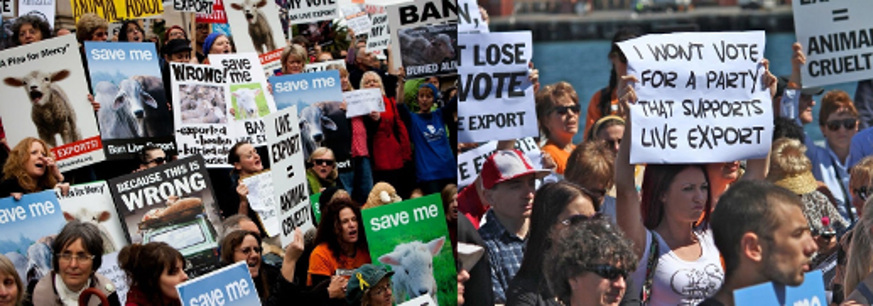

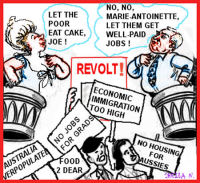 Some recent comments reproduced here. Please contribute more. Joe Hockey seems like a nice guy, an intelligent guy, but he's just too rich to be really useful to anyone who isn't. He reminds me of Marie-Antoinette, a foreign princess who didn't want to try to understand the problems of the people and her husband. People look back and say, "How could she be so silly? Couldn't she see that the people were angry and desperate?" But, you know, she had other priorities.
Some recent comments reproduced here. Please contribute more. Joe Hockey seems like a nice guy, an intelligent guy, but he's just too rich to be really useful to anyone who isn't. He reminds me of Marie-Antoinette, a foreign princess who didn't want to try to understand the problems of the people and her husband. People look back and say, "How could she be so silly? Couldn't she see that the people were angry and desperate?" But, you know, she had other priorities.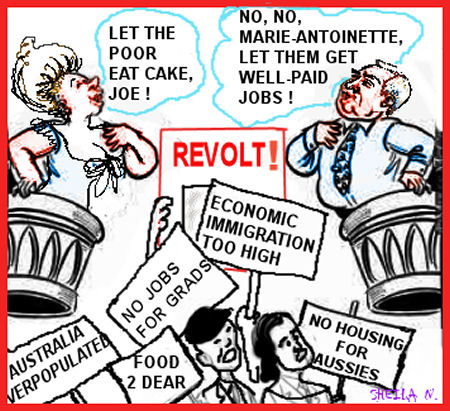
 Candobetter.net Editor: This article is about the US contribution to the radicalisation of the Middle East. In reality there is no dividing wall between the 'extremists' and 'America's supposedly moderate opposition allies'. Recently both Turkey and Saudi Arabia, which operate out of US-led command centers in Turkey and Jordan, signed a pact to coordinate support to al-Qaeda and other extremist groups in order to further attack the Syrian government.
Candobetter.net Editor: This article is about the US contribution to the radicalisation of the Middle East. In reality there is no dividing wall between the 'extremists' and 'America's supposedly moderate opposition allies'. Recently both Turkey and Saudi Arabia, which operate out of US-led command centers in Turkey and Jordan, signed a pact to coordinate support to al-Qaeda and other extremist groups in order to further attack the Syrian government.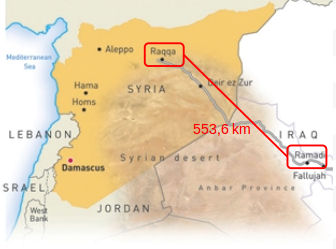
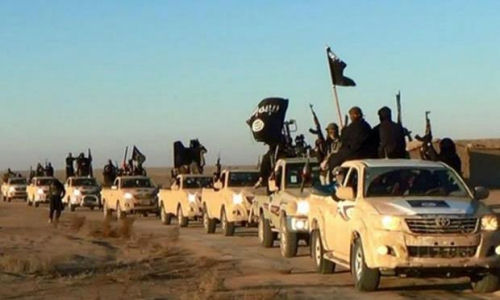
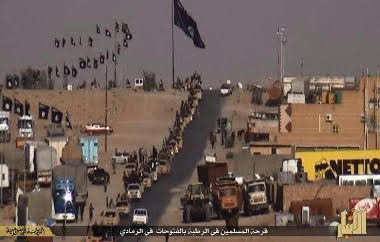

 At first glance The Australian Greens’ announcement that they would abolish the negative gearing
At first glance The Australian Greens’ announcement that they would abolish the negative gearing Even as an old man, my father was as strong as an ox and built a log cabin from scratch with his bare hands when he was 70 years old. But then he suffered a heart attack. And his doctor put him on all kinds of medications, at least ten pills a day. And a year later he had shrunk from standing over six feet tall to being only 5' 7" -- and from weighing 200 pounds to weighing only 125. And a month after that he was dead. Geez Louise! What the freak was in those pills anyway? Couldn't he have just eaten more bananas instead?
Even as an old man, my father was as strong as an ox and built a log cabin from scratch with his bare hands when he was 70 years old. But then he suffered a heart attack. And his doctor put him on all kinds of medications, at least ten pills a day. And a year later he had shrunk from standing over six feet tall to being only 5' 7" -- and from weighing 200 pounds to weighing only 125. And a month after that he was dead. Geez Louise! What the freak was in those pills anyway? Couldn't he have just eaten more bananas instead?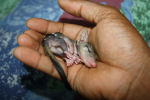 5 June 2015 is World Environment Day, but you wouldn't know it in Australia as State and Federal Governments pave the way for inappropriate and highly environmentally damaging land-clearing. This week media reports have detailed the Federal Government's approval for significant clearing of Critically Endangered woodlands in the Hunter Valley and lack of oversight on potentially illegal broad-scale clearing in Cape York, permitted by the former Queensland Government in direct contravention of national environment law.
5 June 2015 is World Environment Day, but you wouldn't know it in Australia as State and Federal Governments pave the way for inappropriate and highly environmentally damaging land-clearing. This week media reports have detailed the Federal Government's approval for significant clearing of Critically Endangered woodlands in the Hunter Valley and lack of oversight on potentially illegal broad-scale clearing in Cape York, permitted by the former Queensland Government in direct contravention of national environment law. Video-link inside. Australians now have a choice of many news services from all over the world via the internet. Many countries broadcast in English. Iranian television on-line has a continuous on-line news broadcast service in English and conducts some very topical and vivid debates. Tonight Shabbir R. Hassanally, activist and Islamic scholar in London debated Lawrence J.Korb, former US assistant secretary of defense from Washington, on the subject of who benefits from sowing the seeds of division among Muslims. The role of Turkey, Saudi Arabia and the United States vis a vis ISIS are questioned. The whole notion of 'Sunni-Shia' division is challenged. Female presenter, Kaneez Fatima, comperes. Well worth listening to if you want to hear the other side of what is served up by the ABC and SBS on the wars we support in the Middle East.
Video-link inside. Australians now have a choice of many news services from all over the world via the internet. Many countries broadcast in English. Iranian television on-line has a continuous on-line news broadcast service in English and conducts some very topical and vivid debates. Tonight Shabbir R. Hassanally, activist and Islamic scholar in London debated Lawrence J.Korb, former US assistant secretary of defense from Washington, on the subject of who benefits from sowing the seeds of division among Muslims. The role of Turkey, Saudi Arabia and the United States vis a vis ISIS are questioned. The whole notion of 'Sunni-Shia' division is challenged. Female presenter, Kaneez Fatima, comperes. Well worth listening to if you want to hear the other side of what is served up by the ABC and SBS on the wars we support in the Middle East.
 Most Australian and US viewers will be completely unaware that polls have consistently shown the majority of Syrians supporting their government and opposing armed opposition attacks. British journalist Jonathan Steele wrote in 2012, “Most Syrians back President Assad but you’d never know from Western media. In 2013, a NATO study concluded that Assad was winning the battle for Syrian hearts and minds. In light of this it seems fair to ask: Why are none of these voices included in a documentary about Syria? Why were there no voices from members of the
Most Australian and US viewers will be completely unaware that polls have consistently shown the majority of Syrians supporting their government and opposing armed opposition attacks. British journalist Jonathan Steele wrote in 2012, “Most Syrians back President Assad but you’d never know from Western media. In 2013, a NATO study concluded that Assad was winning the battle for Syrian hearts and minds. In light of this it seems fair to ask: Why are none of these voices included in a documentary about Syria? Why were there no voices from members of the  This article originally entitled: PBS Frontline Fails the Public with “Obama at War”: A Case Study in Distortion and Bias on Syria, by Rick Sterling and first published on June 4th, 2015 at
This article originally entitled: PBS Frontline Fails the Public with “Obama at War”: A Case Study in Distortion and Bias on Syria, by Rick Sterling and first published on June 4th, 2015 at 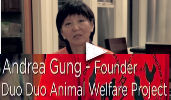
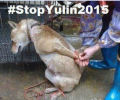 Most of these animals are stolen pets. All Chinese are not cruel, but this festival provides an economic excuse for the cruelest of thefts and practices, which many Chinese want ended: Open letter from Animal activist, Chantal Buslot: An animal rights lawyer in Beijing said that official claims that all dogs slaughtered for the Chinese Dog Meat Festival are bred by local dog farmers is false. Xiang said according to research there are no such farms and that all dogs are abducted from the streets. (
Most of these animals are stolen pets. All Chinese are not cruel, but this festival provides an economic excuse for the cruelest of thefts and practices, which many Chinese want ended: Open letter from Animal activist, Chantal Buslot: An animal rights lawyer in Beijing said that official claims that all dogs slaughtered for the Chinese Dog Meat Festival are bred by local dog farmers is false. Xiang said according to research there are no such farms and that all dogs are abducted from the streets. (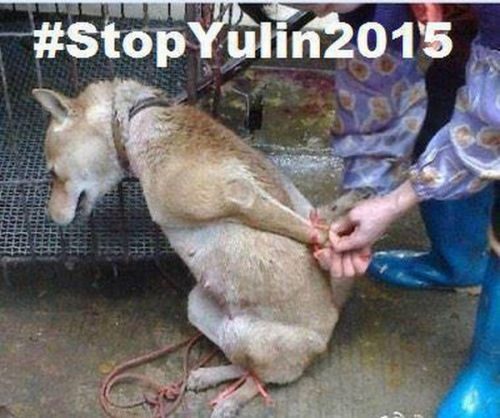

 Compassion was a far more effective environmental management tool than “poison and guns,” award winning ecologist Dr Arian Wallach told a recent conference of conservationists and farmers. And dingoes were an ideal agent for saving the environment and promoting co-existence between native and exotic species. The May 17, 2015 conference, “Dingo – Friend or Foe” was held at Hervey Bay Community Centre, just across the Great Sandy Straits from World Heritage listed Fraser Island where, it was argued, Australia’s war on the dingo began. Three prominent local farmers, Harry Jamieson, Lindsay Titmarsh and James Hansen told the conference of dingo problems, worse in recent years than ever before. (Article by Arthur Gorrie. )
Compassion was a far more effective environmental management tool than “poison and guns,” award winning ecologist Dr Arian Wallach told a recent conference of conservationists and farmers. And dingoes were an ideal agent for saving the environment and promoting co-existence between native and exotic species. The May 17, 2015 conference, “Dingo – Friend or Foe” was held at Hervey Bay Community Centre, just across the Great Sandy Straits from World Heritage listed Fraser Island where, it was argued, Australia’s war on the dingo began. Three prominent local farmers, Harry Jamieson, Lindsay Titmarsh and James Hansen told the conference of dingo problems, worse in recent years than ever before. (Article by Arthur Gorrie. ) Researcher and grazier Adam O’Neill said the national “war on the dingo” which followed the death of a boy, Clinton Gage on Fraser Island in 2001 had caused a significant worsening of the problems it was supposed to address.
Researcher and grazier Adam O’Neill said the national “war on the dingo” which followed the death of a boy, Clinton Gage on Fraser Island in 2001 had caused a significant worsening of the problems it was supposed to address.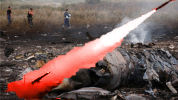 Almaz-Antey, a Russian manufacturer of Buk missiles and Russia's main air-defense manufacturer has begun its own investigations into the MH17 affair, where a Malaysian air flight was downed over war-torn East Ukraine. Since this tragedy, NATO supporters have accused Russia of being the owner of a BUK missile which some believe may have been the thing that brought the Flight MH17 passenger aircraft down. Russians have responded by suggesting that if a missile was involved, it was probably a Ukrainian missile fired from East Ukraine when it was under Kiev military control. Although there are other theories, including one that another aircraft may have fired on MH17, the missile manufacturer itself is now trying to conduct its own investigation in order to have sanctions against it lifted. According to Almaz-Antey, missile manufacturers, the missile that likely struck the Boeing aircraft, 9M38-M1, was not produced in the Russian Federation since 1999, but they have evidence that the BUK-M1 air defense missile system and accompanying missiles were still deployed with the Ukrainian Armed Forces in 2005. According to their evidence, Ukraine had a total of 991 9M38M1 missiles at the time.
Almaz-Antey, a Russian manufacturer of Buk missiles and Russia's main air-defense manufacturer has begun its own investigations into the MH17 affair, where a Malaysian air flight was downed over war-torn East Ukraine. Since this tragedy, NATO supporters have accused Russia of being the owner of a BUK missile which some believe may have been the thing that brought the Flight MH17 passenger aircraft down. Russians have responded by suggesting that if a missile was involved, it was probably a Ukrainian missile fired from East Ukraine when it was under Kiev military control. Although there are other theories, including one that another aircraft may have fired on MH17, the missile manufacturer itself is now trying to conduct its own investigation in order to have sanctions against it lifted. According to Almaz-Antey, missile manufacturers, the missile that likely struck the Boeing aircraft, 9M38-M1, was not produced in the Russian Federation since 1999, but they have evidence that the BUK-M1 air defense missile system and accompanying missiles were still deployed with the Ukrainian Armed Forces in 2005. According to their evidence, Ukraine had a total of 991 9M38M1 missiles at the time.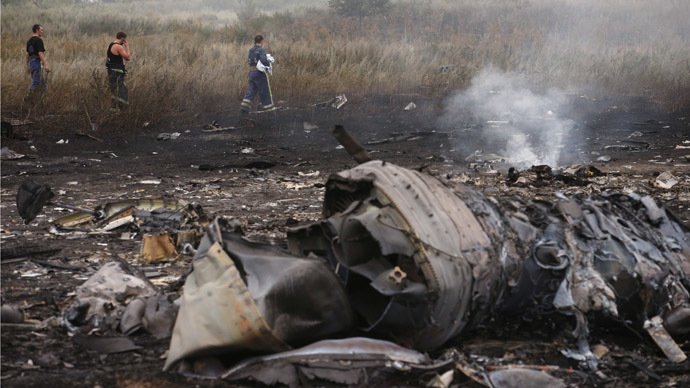
 Update: See note [1] on where candobetter.net's values differ from those apparent on Party for Freedom site. John Ajaka, the NSW Minister for Multiculturalism's
Update: See note [1] on where candobetter.net's values differ from those apparent on Party for Freedom site. John Ajaka, the NSW Minister for Multiculturalism's 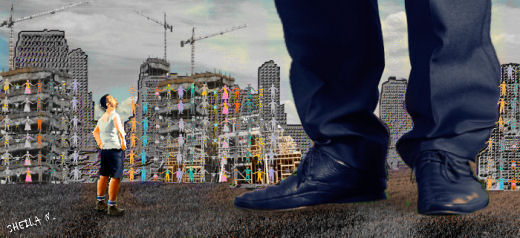 The multicultural cloak has been given unmerited authority and power by vested interest and protection from political figures. Nick Folkes is a working man attempting to lead protests against mass dispossession of Australian citizens by virtually unregulated foreign property buyers who are outbidding Australians and contributing to an overpriced Australian housing market.
The multicultural cloak has been given unmerited authority and power by vested interest and protection from political figures. Nick Folkes is a working man attempting to lead protests against mass dispossession of Australian citizens by virtually unregulated foreign property buyers who are outbidding Australians and contributing to an overpriced Australian housing market. 


 Inside are three videos warning about the dangers of signing the TransPacific Trade agreements that global organisations want to get many countries, including Australia, to sign. The first is a very quick overview. In the second video, at Democracy Now,
Inside are three videos warning about the dangers of signing the TransPacific Trade agreements that global organisations want to get many countries, including Australia, to sign. The first is a very quick overview. In the second video, at Democracy Now, 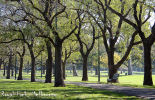 This is a report on Transurban and the Western Distributor and the Defence of Our Parks from Commercial Development and Takeover by Park Furniture. It also contains details of upcoming Transurban: Western Distributor - Information sessions through the inner west in May and June.
This is a report on Transurban and the Western Distributor and the Defence of Our Parks from Commercial Development and Takeover by Park Furniture. It also contains details of upcoming Transurban: Western Distributor - Information sessions through the inner west in May and June.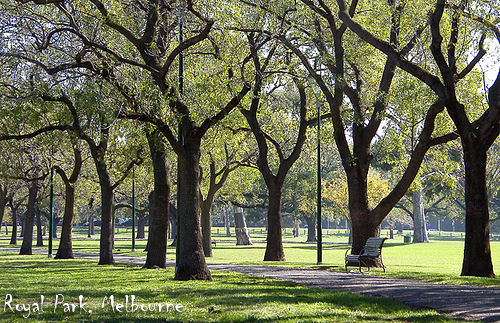
 "Where does ISIS come from and how can we stop them?" you might ask. Answering that question is easy if you just do the math. So let's find out the answer -- by simply adding up the columns of numbers listed below:
"Where does ISIS come from and how can we stop them?" you might ask. Answering that question is easy if you just do the math. So let's find out the answer -- by simply adding up the columns of numbers listed below: ISIS = American weapons and training.
ISIS = American weapons and training. 
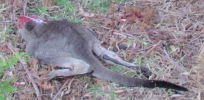 On the early evening of Tuesday the 26 of May, the tranquil peace at Boneo was broken by the sounds of over 100 gun shots.
On the early evening of Tuesday the 26 of May, the tranquil peace at Boneo was broken by the sounds of over 100 gun shots.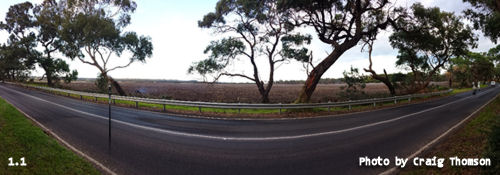
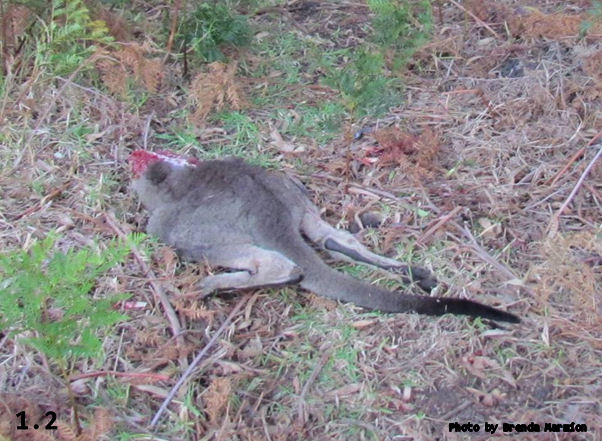
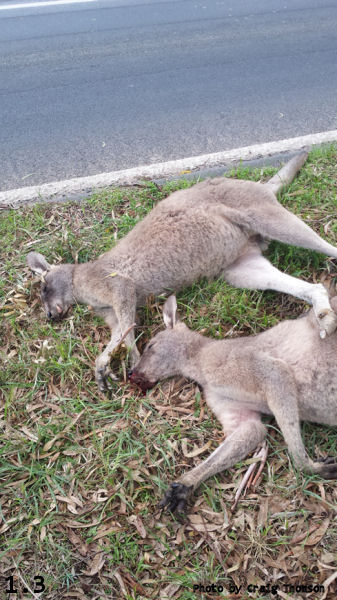
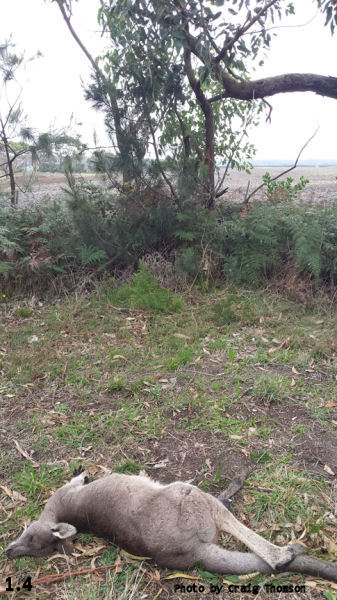

 In Geraldine Doogue's interview with war strategist David Kilcullen on ABC's Saturday Extra (
In Geraldine Doogue's interview with war strategist David Kilcullen on ABC's Saturday Extra ( The protection of owls might soon go to the Supreme Court and a proposed regulatory change will allow native forest wood to be burnt for electricity. It was been tabled in the House of Reps today, 27 May 2015. There is a danger that Bill Shorten's Labor Party might support the bill, despite what that says about our renewable energy scheme. Read on to find out how we might fight this.
The protection of owls might soon go to the Supreme Court and a proposed regulatory change will allow native forest wood to be burnt for electricity. It was been tabled in the House of Reps today, 27 May 2015. There is a danger that Bill Shorten's Labor Party might support the bill, despite what that says about our renewable energy scheme. Read on to find out how we might fight this.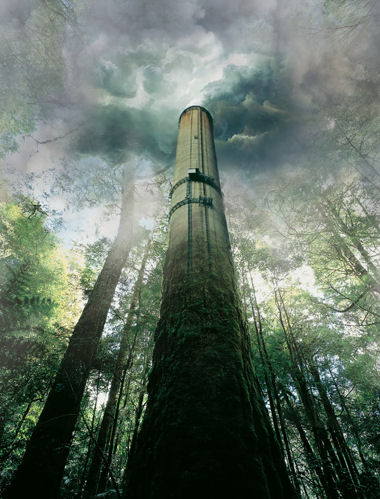
 So I'm down here in Van Nuys right now -- at an Islamic trance-dancing convention of all things. So this morning I go into a Sufi-like trance and what is the first thing that crosses my mind? How much I hate all those hundreds and hundreds of new-car commercials we always see on TV. What a waste of a good trance dance!
So I'm down here in Van Nuys right now -- at an Islamic trance-dancing convention of all things. So this morning I go into a Sufi-like trance and what is the first thing that crosses my mind? How much I hate all those hundreds and hundreds of new-car commercials we always see on TV. What a waste of a good trance dance!
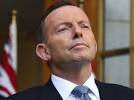 Allegations by Australian Prime Minister Tony Abbott against Russia may have no solid basis, but could escalate world tensions. Many people view these allegations as propaganda to provide a platform for eventual NATO aggression. These allegations have recently been reinforced by Julie Bishop, Minister for Foreign Affairs and Trade, as a reason for applying sanctions against Russia. See
Allegations by Australian Prime Minister Tony Abbott against Russia may have no solid basis, but could escalate world tensions. Many people view these allegations as propaganda to provide a platform for eventual NATO aggression. These allegations have recently been reinforced by Julie Bishop, Minister for Foreign Affairs and Trade, as a reason for applying sanctions against Russia. See  Julie Bishop is the Minister for Foreign Affairs and Trade. Recently she issued
Julie Bishop is the Minister for Foreign Affairs and Trade. Recently she issued  Nobel laureate J.M. Coetzee is one of fifty well-known authors and scientists who have signed this open letter to the Canberra public protesting the mass killing of kangaroos which has been taking place annually for some time in Canberra. For those interested in the history of this annual slaughter, Candobetter.net has published at length on this subject here:
Nobel laureate J.M. Coetzee is one of fifty well-known authors and scientists who have signed this open letter to the Canberra public protesting the mass killing of kangaroos which has been taking place annually for some time in Canberra. For those interested in the history of this annual slaughter, Candobetter.net has published at length on this subject here:  AN OPEN LETTER TO THE PUBLIC OF CANBERRA
AN OPEN LETTER TO THE PUBLIC OF CANBERRA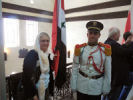 My three-month-old granddaughter has finally fallen asleep so I gotta bang this article out fast before she wakes up and I don't have a lot of time to run all this down to you ad infinitum. Thus I'm only going to explain it to you once. So listen up.
My three-month-old granddaughter has finally fallen asleep so I gotta bang this article out fast before she wakes up and I don't have a lot of time to run all this down to you ad infinitum. Thus I'm only going to explain it to you once. So listen up.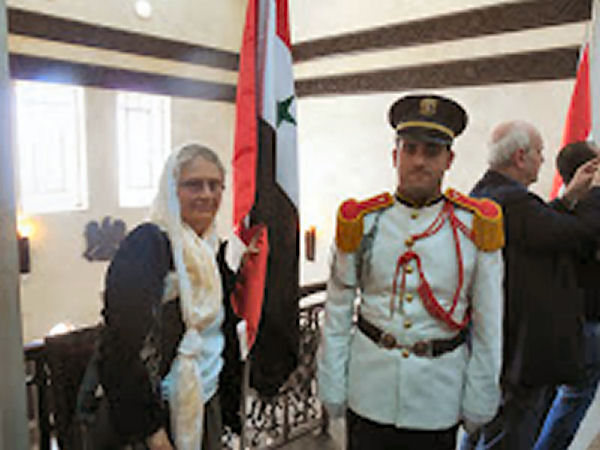 But if you really really do want to fight to protect Islam, then go to Damascus and join Assad's heroic Syrian army instead. Or go fight for Hezbollah. Or join the Houthi in Yemen. Or decry the slaughter of Muslims in Gaza. Are you pissed off at the western neo-colonialist imperialist Empire of Chaos for unjustly demonizing your religion and destroying the Middle East? Then put your freaking anger where your mouth is. Go fight against ISIS -- not for it.
But if you really really do want to fight to protect Islam, then go to Damascus and join Assad's heroic Syrian army instead. Or go fight for Hezbollah. Or join the Houthi in Yemen. Or decry the slaughter of Muslims in Gaza. Are you pissed off at the western neo-colonialist imperialist Empire of Chaos for unjustly demonizing your religion and destroying the Middle East? Then put your freaking anger where your mouth is. Go fight against ISIS -- not for it.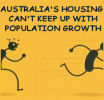 Candobetter.net Editor: Article updated with full submission included and relabeling of table. The Commonwealth Senate released its long-awaited report on housing affordability on 8 May last, conveniently a few days before the release of the Federal Budget. The 461 page report examined, inter alia, the many supply and demand factors which impact on housing prices and affordability, and acknowledged that supply was not keeping up with demand – an obvious and major cause of rising house prices. But the emphasis of its recommendations was that the solution lay in increasing supply rather than in reducing demand. The elephant in the room, namely population growth, although mentioned in several submissions, hardly featured in its recommendations. This is not surprising, given the reluctance of politicians to face up to the obvious but politically awkward issues of immigration and birth rates, especially with the high level of influence exerted by vested business and property interests (including the recently revealed large number of politicians who own investment property).
Candobetter.net Editor: Article updated with full submission included and relabeling of table. The Commonwealth Senate released its long-awaited report on housing affordability on 8 May last, conveniently a few days before the release of the Federal Budget. The 461 page report examined, inter alia, the many supply and demand factors which impact on housing prices and affordability, and acknowledged that supply was not keeping up with demand – an obvious and major cause of rising house prices. But the emphasis of its recommendations was that the solution lay in increasing supply rather than in reducing demand. The elephant in the room, namely population growth, although mentioned in several submissions, hardly featured in its recommendations. This is not surprising, given the reluctance of politicians to face up to the obvious but politically awkward issues of immigration and birth rates, especially with the high level of influence exerted by vested business and property interests (including the recently revealed large number of politicians who own investment property).
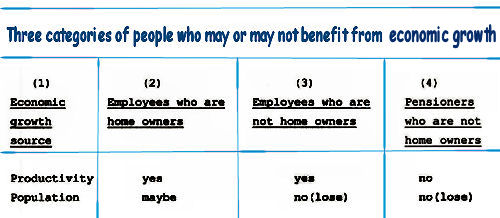 [Editor comment: title of table changed 22 May 2015 to correct a transcription error.]
[Editor comment: title of table changed 22 May 2015 to correct a transcription error.]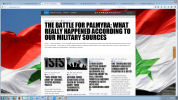 (Republished from article by Ziad Fadel on Syrian Perspective news site published at about 0100 hrs 22 May Australian time, titled, "The Battle for Palmyra: What really happened according to our military sources" at
(Republished from article by Ziad Fadel on Syrian Perspective news site published at about 0100 hrs 22 May Australian time, titled, "The Battle for Palmyra: What really happened according to our military sources" at 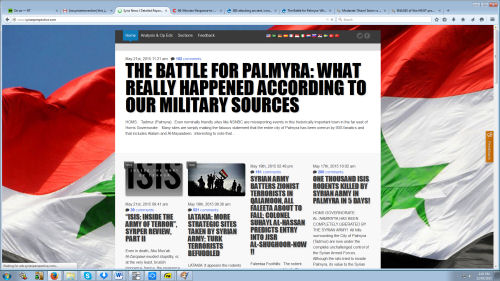
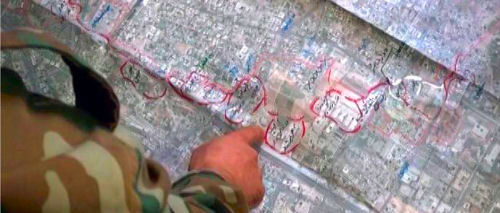
 News reports have begun to come in about the fall of Palmyra to ISIS in Syria, and while most Western media has rightly been concerned with the city’s ancient ruins, few mentions have been given to the welfare of the people living in the region, or the fact that “The Syrian army launched a massive operation to evacuate as many civilians as possible of the city’s 100,000 inhabitants before its epic defeat.” (
News reports have begun to come in about the fall of Palmyra to ISIS in Syria, and while most Western media has rightly been concerned with the city’s ancient ruins, few mentions have been given to the welfare of the people living in the region, or the fact that “The Syrian army launched a massive operation to evacuate as many civilians as possible of the city’s 100,000 inhabitants before its epic defeat.” (
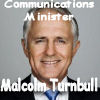 This is a letter to Malcolm Turnbull, Communications Minister, from Susan Dirgham of
This is a letter to Malcolm Turnbull, Communications Minister, from Susan Dirgham of
Recent comments